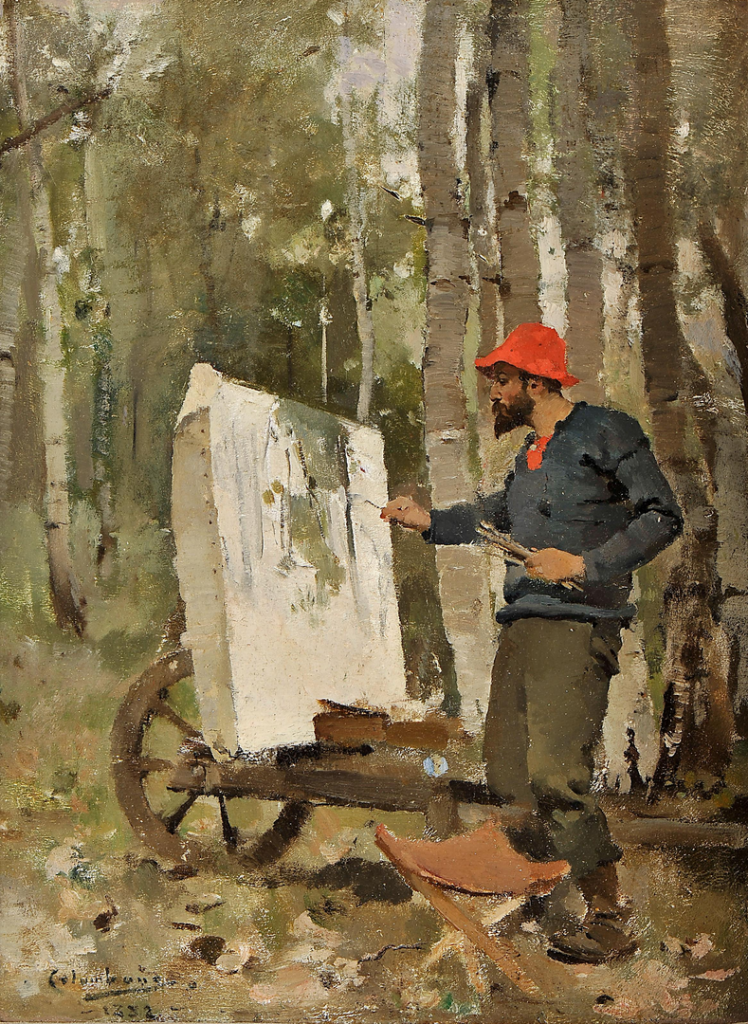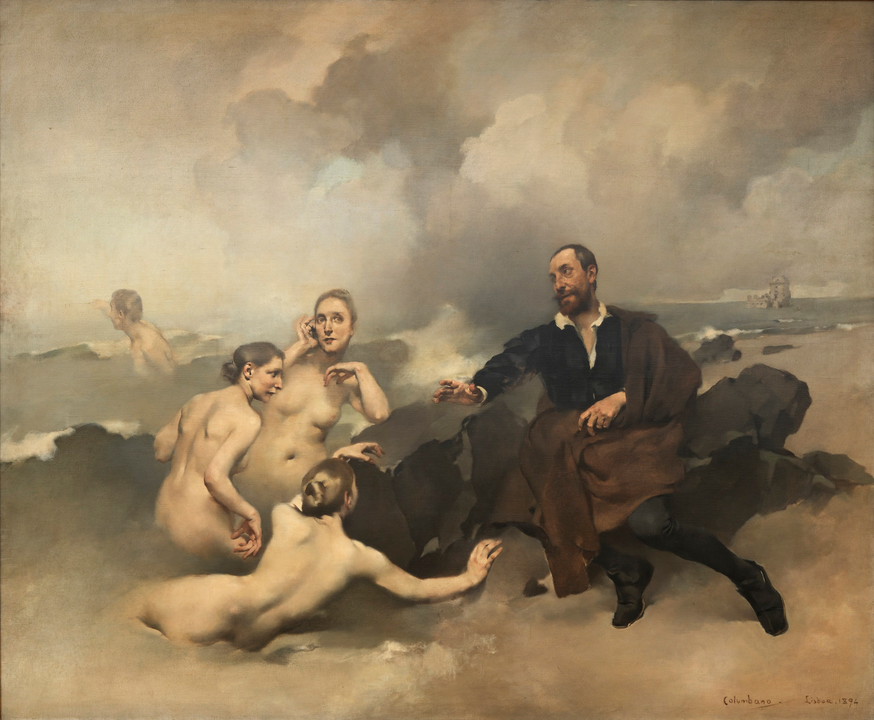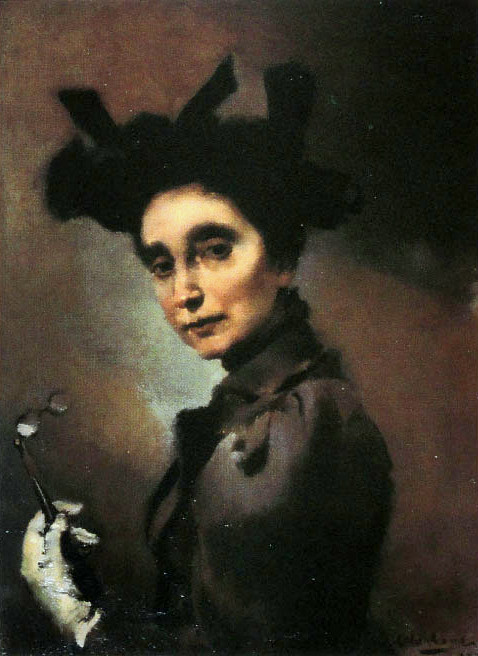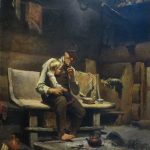
Columbano Bordalo Pinheiro (1857–1929) was a prominent Portuguese painter and realist artist. He was a leading figure in the Portuguese artistic scene during the late 19th and early 20th centuries and played a crucial role in the transition from academic traditions to more modern and naturalistic styles in Portuguese art.
- Early Life and Education: Columbano Bordalo Pinheiro was born in Lisbon, Portugal, into a family of artists. He received his early artistic training from his father, Manuel Maria Bordalo Pinheiro, who was a well-known painter and ceramics artist. Later, he studied at the Academy of Fine Arts in Lisbon.
- Artistic Styles: Columbano initially adhered to academic traditions but later embraced various styles, including Naturalism and Realism. He was influenced by the French Barbizon School and the naturalist approach to art, which sought to depict everyday life and the world as it is.
- Portraiture: Columbano became particularly acclaimed for his portraiture. His portraits often captured the personality and character of his subjects, revealing a deep understanding of human psychology. His most famous portrait is that of Portuguese writer and poet Antero de Quental.

- Social and Political Engagement: Columbano was actively involved in social and political issues. He used his art to engage with contemporary problems, advocating for social justice and addressing the challenges faced by the working class. This social consciousness is evident in works like “The Famine” and “The Relic.”
- Exhibitions and Recognition: Columbano Bordalo Pinheiro exhibited his works extensively in Portugal and internationally. He participated in various international exhibitions, including the Exposition Universelle in Paris. He received recognition for his contributions to Portuguese art and was involved in art institutions, contributing to the development of the artistic community.
- Teaching Career: Columbano served as a professor at the Academy of Fine Arts in Lisbon. His influence extended beyond his own artistic practice, as he played a key role in shaping the next generation of Portuguese artists.
- Later Years and Legacy: In the later years of his career, Columbano continued to explore different styles and subjects, including historical and religious themes. His legacy is evident in the impact he had on Portuguese art, influencing subsequent generations of artists. The Columbano Bordalo Pinheiro Museum in Lisbon is dedicated to his life and work.
Columbano Bordalo Pinheiro’s versatility as an artist, from portraiture to social commentary, contributed significantly to the evolving landscape of Portuguese art. His dedication to portraying the realities of his time and his engagement with social issues left an enduring mark on the country’s artistic heritage.






